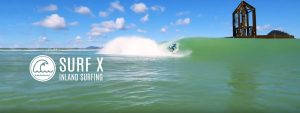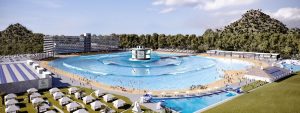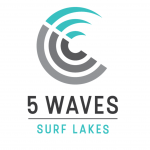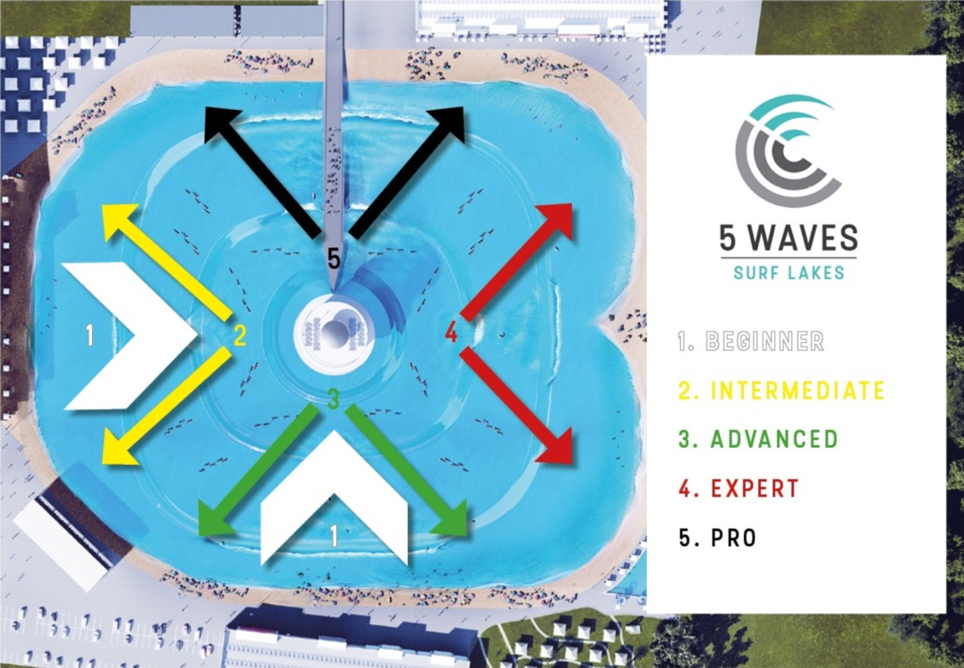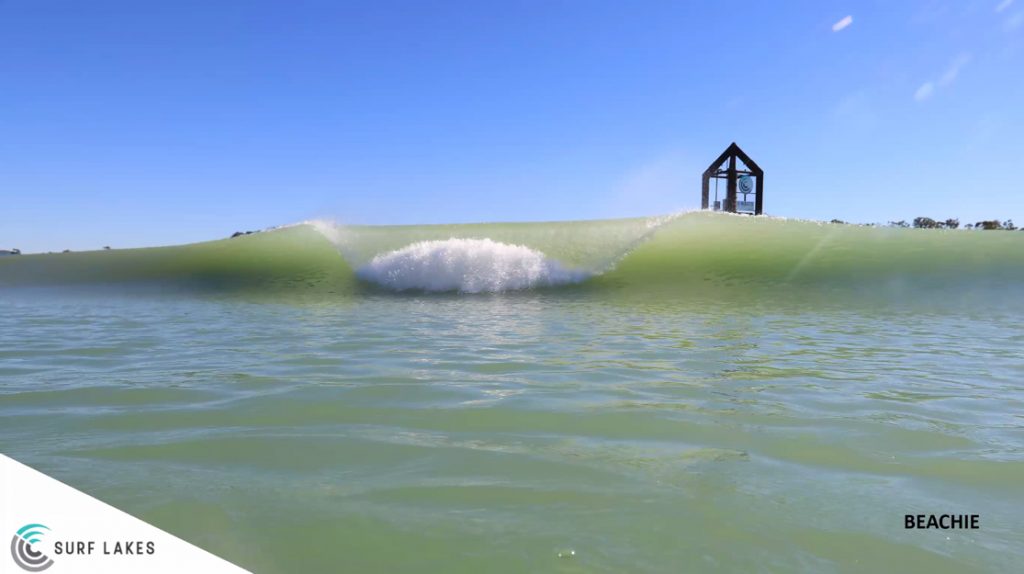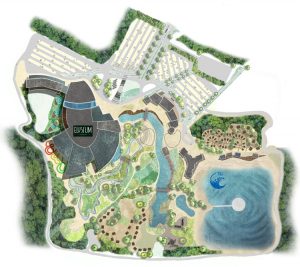

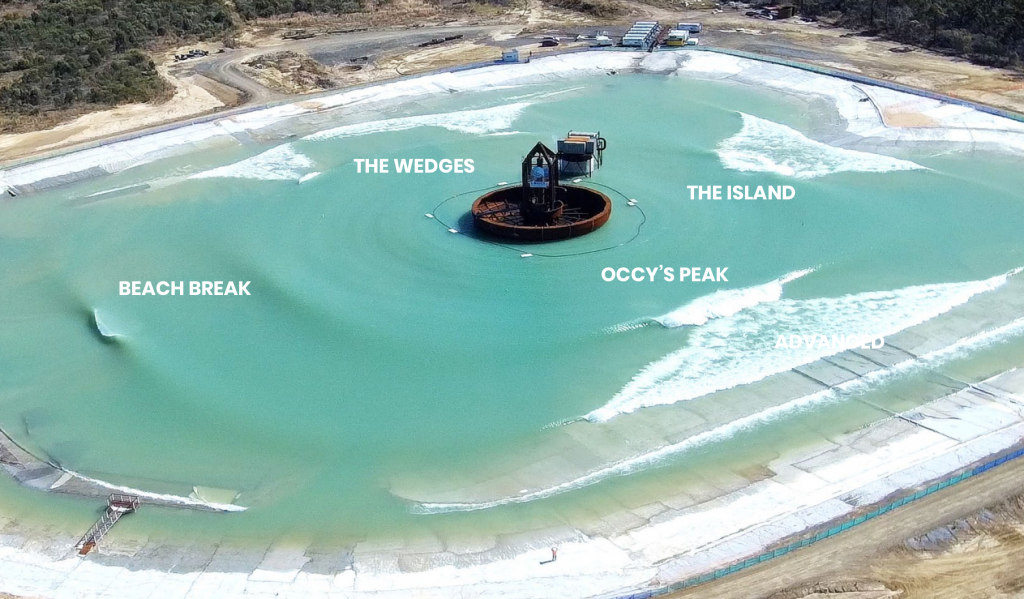
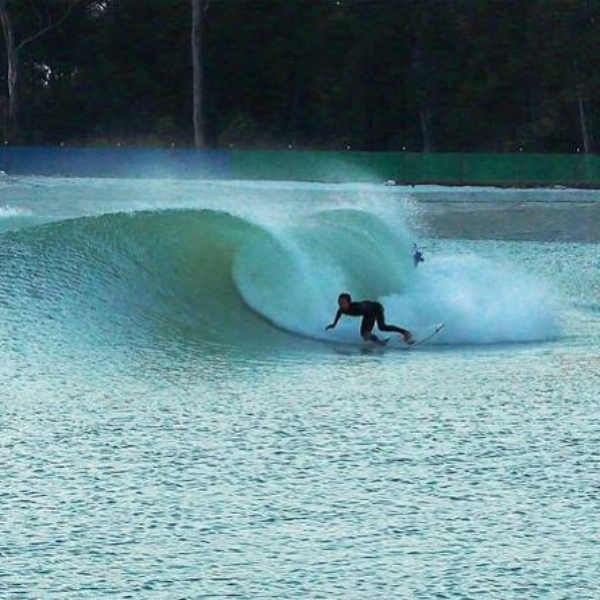
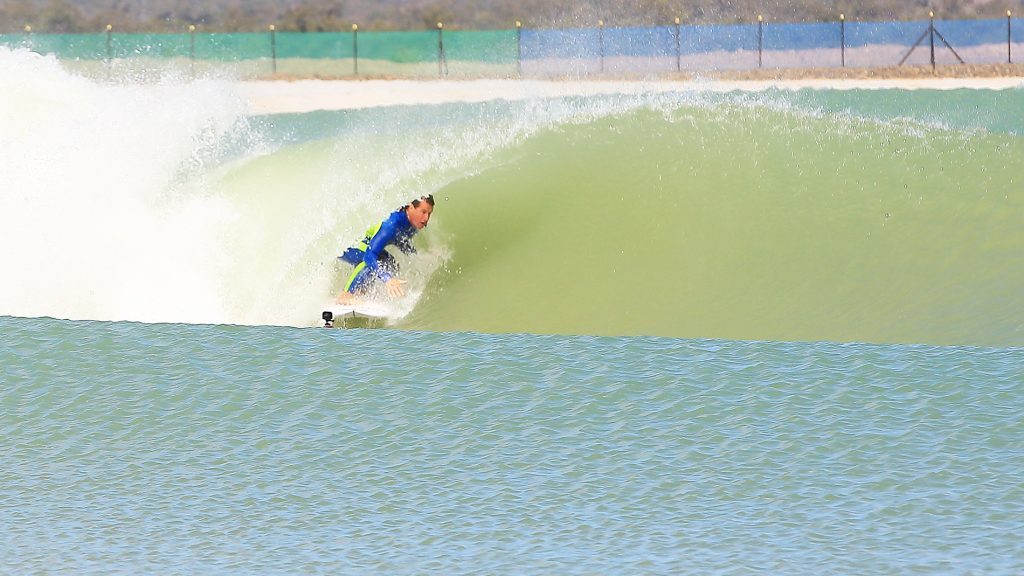
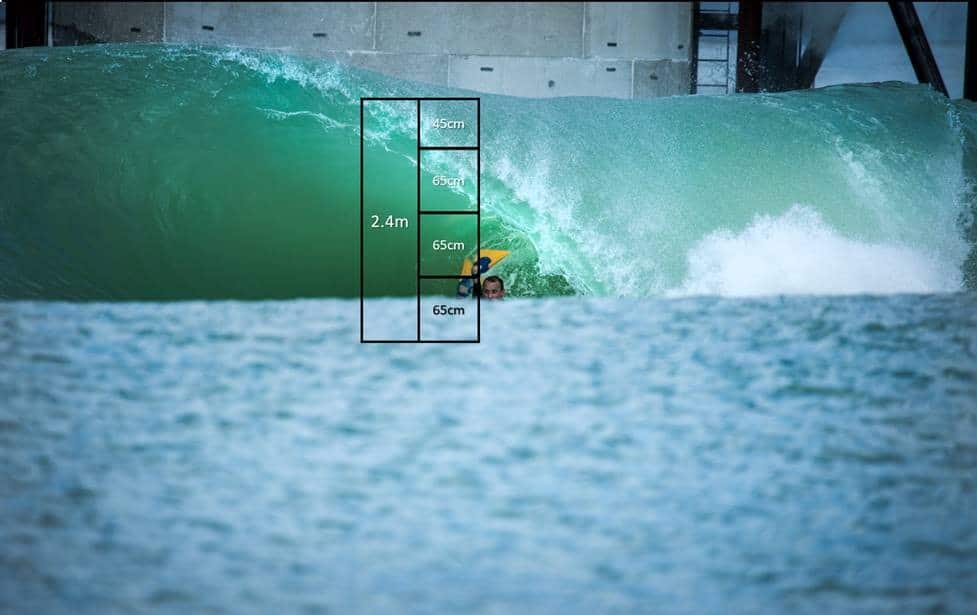
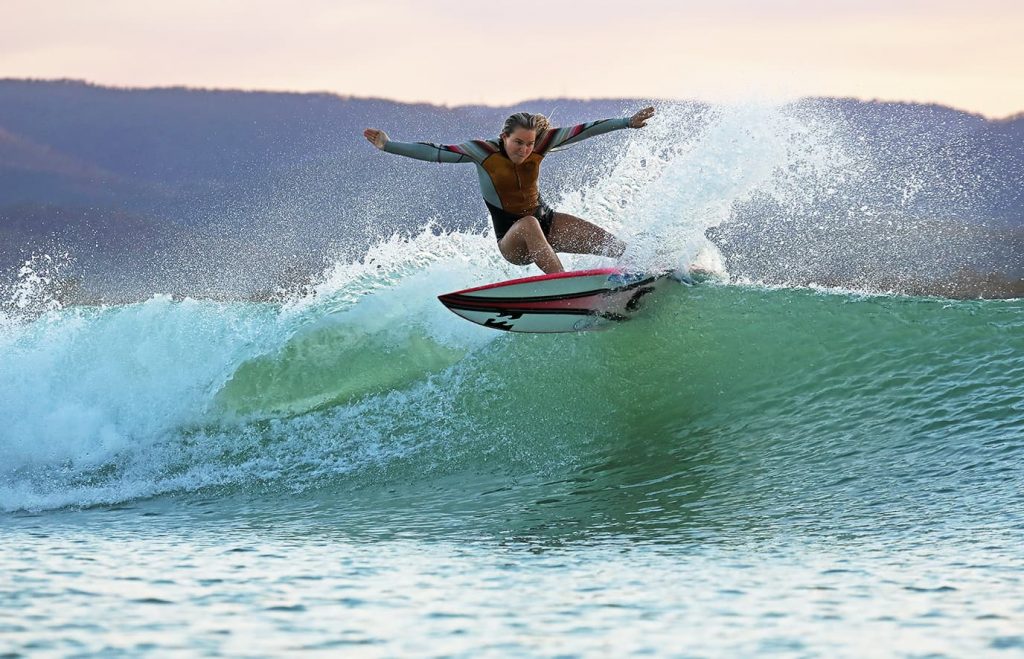
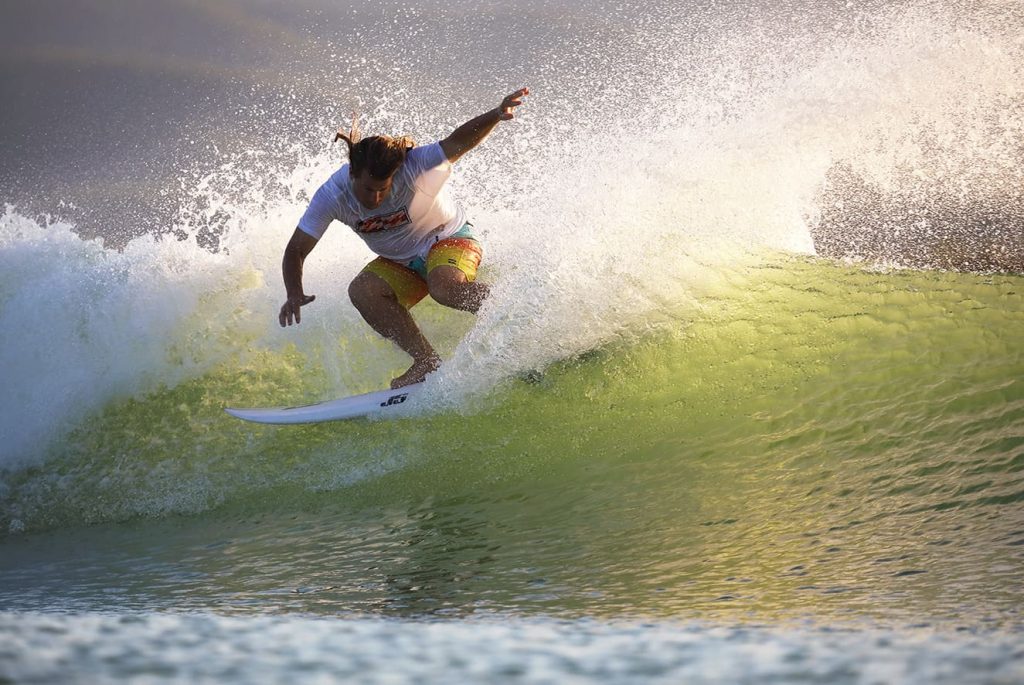
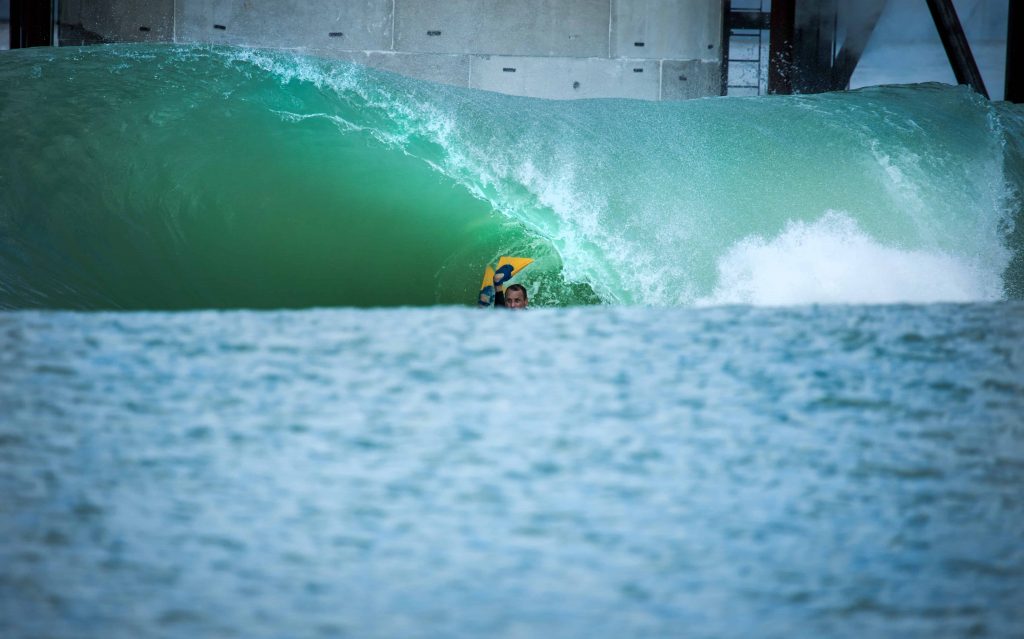
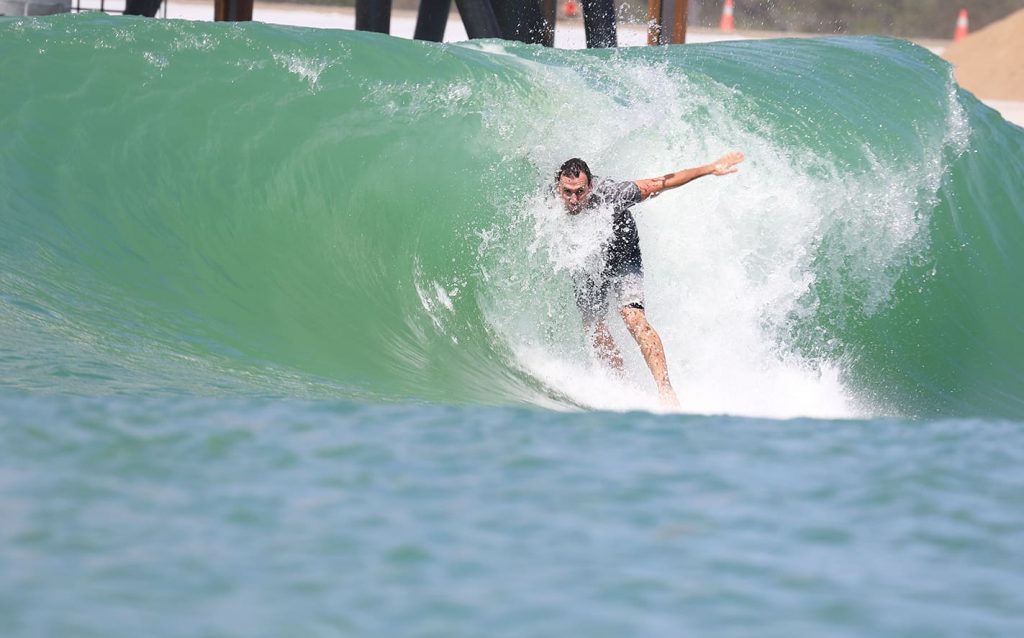
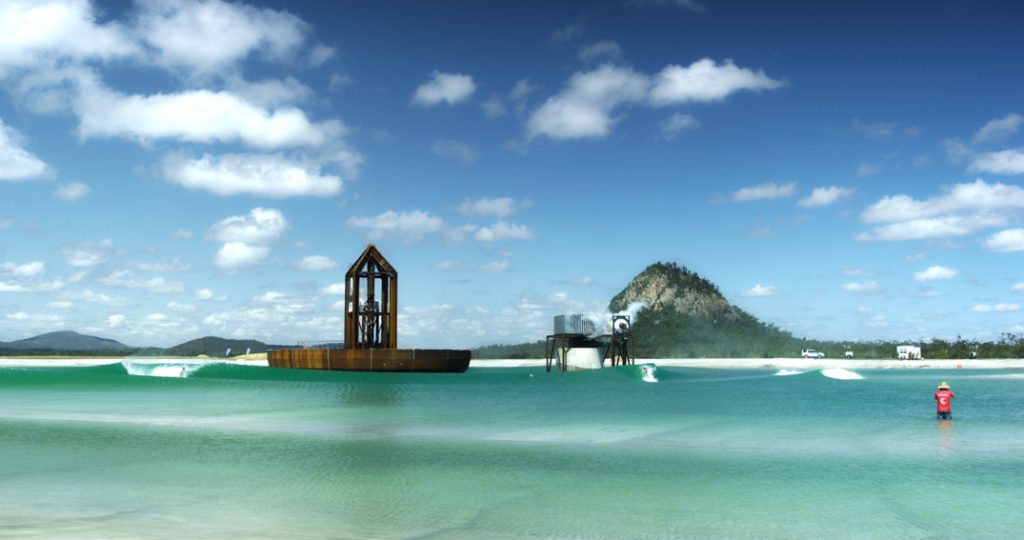
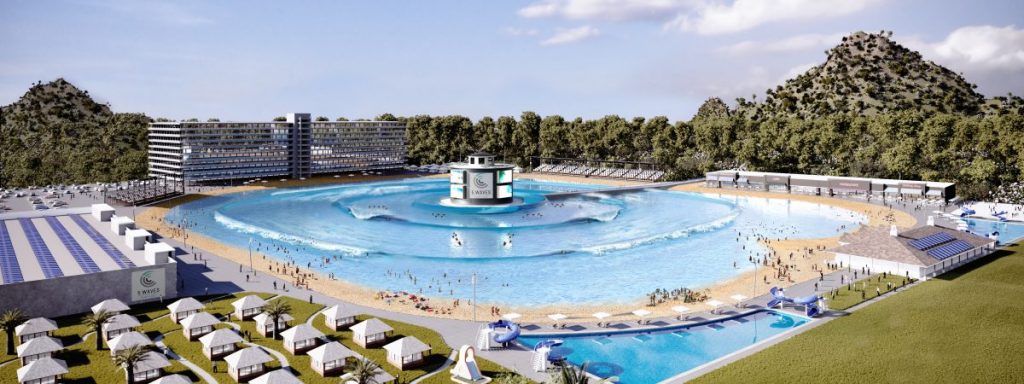
Description
Outside of Yeppoon, Queensland, the Surf Lakes team built a full-scale prototype of their 5 Waves wave pool technology. The wave pool produces a variety of waves ranging from large, hollow barrels to fun ripable peaks.
The swells that radiates out from the “Central Wave Device” (CWD) at the center of the wave pool encounter varying bottom contours as they approach different areas around the outside of the pool. There are four distinct areas, each of which produce a left and a right, that correspond surfers’ skill level: intermediate, advanced, expert and pro. Additionally, beginner areas provide whitewater rollers that are good for learning the basics. Four proper waves plus beginner whitewater makes “5 Waves”.
Like surf breaks, each area has a name. The pro area, called “The Island” produces the largest, most powerful waves that can reach up to 8 (2.4m) feet when measured from trough to peak. It’s a quick barreling wave resembling a slab reef in the ocean, and it bends in toward the surfer creating barrel, vertical face and air opportunities over a 7 second ride. It’s a “Level 5” according to the Surf Lakes team.
“Occy’s peak” is designed to be smaller than the Island and maxes out at 2m (6.5 feet) high on the face of the wave. This Level 4 wave starts with a quick, steep drop that only advanced surfers will be able to navigate. As it breaks, it also bends toward the surfer. It offers barrel, air and turn opportunities, making it was the crowd favorite at most test sessions in August and September 2019. Barrels can be ridden up to 6 seconds, and the total ride time is up to 15 seconds, according to Surf Lakes’ media director, Wayne Dart.
“The Wedges” are Level 3 waves for intermediate and advanced surfers. It’s also 1.6m (5 feet) high on the face of the wave, but it’s more user friendly than Occy’s Peak, offering an open face for practicing turns. Ironically, it appears to break more like a longer point break and the shoulder bends slightly away from the surfer. Surfers can ride the Wedge wave for 10 seconds.
The “Beach Break” is a Level 2 wave, also around 1.6m (5 feet) high on the face of the wave. It’s clearly softer and easier to navigate, making it ideal for intermediate surfers. Surfers can ride the Beach Break wave for 10 seconds.
Inside a couple of the breaks, knee-high whitewater rollers allow beginners to get their feet in the wax for the first time.
The Surf Lakes 5 Wave technology produces waves that are, arguably, most like those that you’ll find in the ocean. Each wave begins with a trough, which draws water toward the surfer and the raised part of the wave.
They’ve run 4 wave sets at the Surf Lakes prototype, but not at full size. To achieve maximum wave height, the team has been running mostly 2 and 3-wave sets. Because of the way the CWD is partially lifted back up by water after dropping to produce the first wave, subsequent waves in a set increase in size, so the second wave in a set is bigger than the first, third bigger than second, and so .
Each swell generated produces rides for 8 surfers (not including beginners). In their commercial installations, the Surf Lakes team hopes to produce 6-wave sets, which means 48 rides per set. They hope to run 50 sets per hour, which totals 2400 rides per hour. They are targeting 100-200 surfers at a time (not including beginners). That means surfers can expect 10-20 waves per hour in ideal conditions. However, the learning curve is steep and we expect these numbers solidify as Surf Lakes moves from prototypes to commercial installations.
All wave pools have to deal with settling time, i.e. the amount of time they have to wait for the energy from one wave or set to dissipate so it doesn’t interfere with the next wave or set. According to Wayne, the water surface at the Surf Lakes prototype is “flat” 10 seconds after the last wave of a set and there are no backwash issues. However, there are still currents running back toward the center of the lagoon. It remains to be seen if 50 six-wave sets in an hour is achievable, assuming that leaves about 20 seconds between each set.
With swell propagating out from the CWD in all directions and encountering peaks on all sides, any wind is bound to produce offshores at one of the peaks. But that also means it on or side-shore at the other peaks. Occy’s peak faces the predominant wind direction, so it will be offshore around 80% of the time according to the Surf Lakes team.
The Surf Lakes prototype wave pool occupies roughly 2.5 hectares. Its is filled with 60 Megaliters of chlorinated water. Commercial installations will require a 2.5-3.5 hectare (6-8.5 acre) lake, plus shoreline space for surrounding amenities. That’s slightly larger than a full size Wavegarden Cove which occupies about 6 acres. The total land area for a commercial installation is expected to be 6-8 hectares (15-20 acres).
The Surf Lakes prototype, which will not open to the public, cost roughly $9M AUD to build. The cost of commercial construction will start around $20M US.
History
For many years prior to the 2018 unveiling of the Surf Lakes prototype, Aaron Trevis (founder of Surf Lakes) was thinking of a concentric wave machine.
After the first small-scale prototype was built in a backyard, Aaron partnered with Reuben Buchanan and Chris Hawley to form Surf Lakes Holdings LTD. Wayne Dart and Kit Sidwell joined the team as well.
They immediately focused on funding a full scale prototype.
As they gathered funding from various private investors, they started working on the full scale prototype. They partnered with Engenuity Solutions for engineering, DHI Gold Coast for their fluid dynamics modeling and Axstra Capital for fundraising.
On October 22nd of 2018, the full size Surf Lakes wave pool prototype started pumping out its first surfable waves. Later that week, the team released footage of their first round of tests. The videos of Occy, Barton Lynch and other pros pulling into tight barrels immediately went viral around the surf community. However, shortly thereafter a major piece on the CWD, called the “Conrod”, broke.
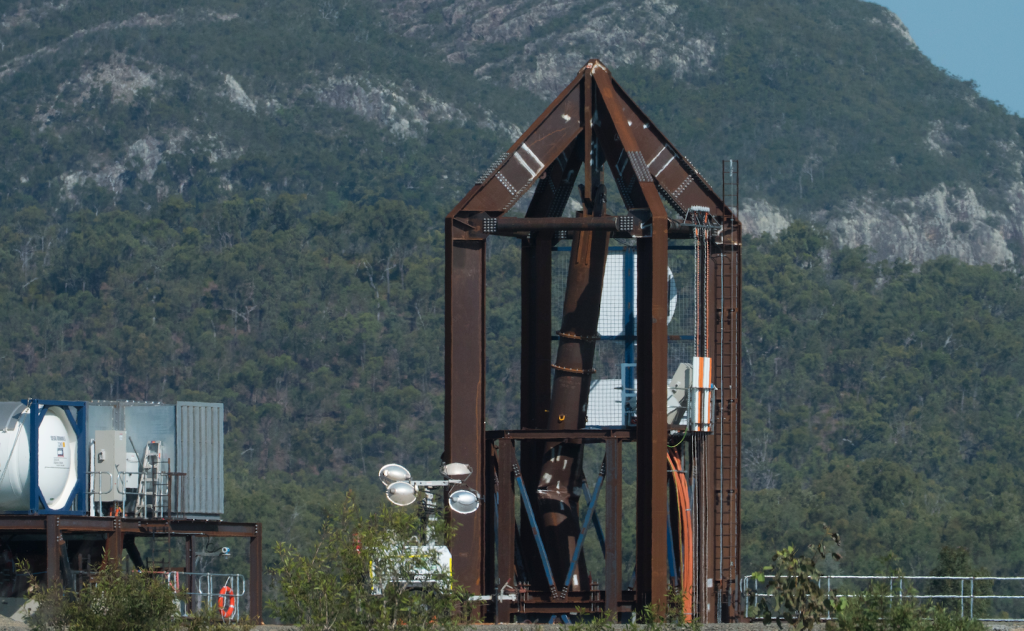
The team went back to work fixing the conrod and making other improvements to the wave generation machinery. They also revisited the bathymetry to produce bigger, better waves.
In July and August 2019, the prototype was back up and running. At first they created waves up to 6′ high in sets of four, but shortly thereafter the Surf Lakes team confirmed that they had produced an 8′ foot wave (measured on the face) at “the Island”.
With a working prototype and a bunch of buzz behind them, its no surprise that interest levels are peaking. Surf Lakes claims to have signed agreements for pools in the U.S.A. And, they are seeing more growing interest from many other developers around the world.
Sources: Surf Lakes, Stab, Surfline
Photos




Photos
News

Wave Data
Business Info
Map
Statistic
Related Surf Spots
